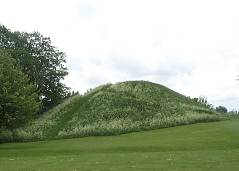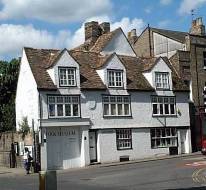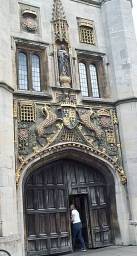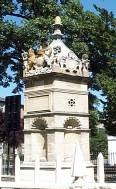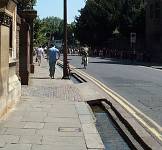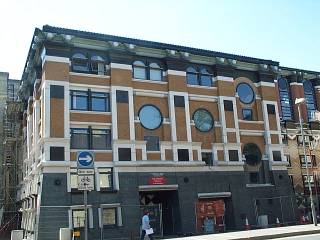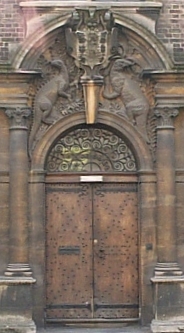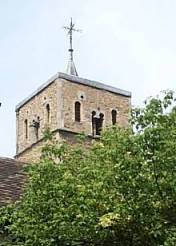
St Bene't's
Cambridge is most famous for its historic university. However, Cambridge is far older than the university.
The original settlement was north of the river, on Castle Hill. There is evidence for pre-Roman activity in the area, but the Romans built the first town. It was a convenient crossing point of the river Cam, on the edge of the marshy fen land. The town was a port, since it was the head of the navigation of what was then known as the River Granta. The area by Magdalene Bridge is still known as Quayside (see right), although now it only has punts. St Peter's Church, halfway up Castle Hill, has pieces of Roman tiles in its walls.
In Anglo Saxon times, there was a settlement on Castle Hill, since it could be defended, and another close to St Benedict's Church, or St Bene't's as it's known in Cambridge. The tower of St Bene't's is Saxon (see left), which makes it the oldest building in Cambridge. The city at the time was called Grantabrycge. At one time it came under Danish rule. St Clement's Church is near Quayside, and this dedication is common in Danish settlements. The Great Bridge (later replaced by Magdalene Bridge) may have built by King Offa (756-793AD). It was the last river crossing until King's Lynn. Cambridge had good trading links to the Continent and a market, and became prosperous.
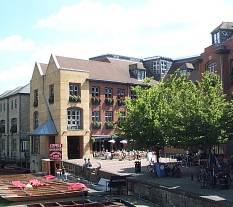
Quayside

